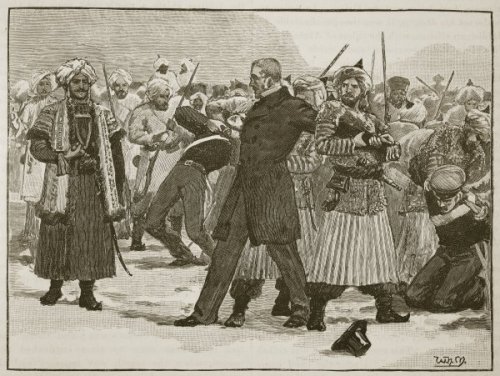The First Anglo Afghan War, Part II — The Afghan RebellionIn case you missed part IThe British
The First Anglo Afghan War, Part II — The Afghan RebellionIn case you missed part IThe British had successfully conquered Afghanistan in 1839, or so they thought. Like many conquerors before them, the British had to learn the hard way that holding Afghanistan was much more difficult than invading Afghanistan. After the capture of Kabul, the British installed a puppet ruler named Shah Shuja Durani. The British believed that by controlling Kabul and installing a puppet ruler, they therefore controlled Afghanistan. However the British severely misunderstood the politics and makeup of Afghanistan. The former ruler Dost Mohammed only really controlled Kabul, Kandahar, and Jalalabad. The rest of the country was controlled by various tribes and warlords, much as it is today, and as it always has been. More importantly, the Afghan people resented British rule and their puppet Shah.Only 8,000 British East India Company troops were left to occupy Afghanistan, 4,000 in Kabul and 4,000 manning outposts scattered across the country. The army was dependent on weapons and supplies from India which traveled through the mountain passes along the Afghan-Pakistani border. The supply wagons made easy targets in the narrow passes as Afghan tribesmen ambushed them from high cliffs and mountains. While the British could easily defeat the Afghans in a conventional battle, they were unprepared for the irregular tactics and guerrilla warfare waged by the Afghans. The Afghans were born and raised in the mountains, knew the territory and geography, and more importantly were experienced in mountain fighting. One particular advantage the Afghans had was that they were crack shots, armed with customized long barreled muskets and rifles called jezails, the Afghans of the mountains had plenty of experience hunting and shooting game at long ranges. Often Afghan attacks were conducted at such long distances that British and Indian troops could not fire back as they were to far away.With British supplies reduced to a trickle, and British outposts all over the country attacked by Afghan rebels, it was becoming clear that the British could not control Afghanistan. Then in 1841 an army led by Dost Mohammed’s son Akbar Khan, arrived from the Hindu Kush Mountains. Thousands of Afghans flocked to Akbar’s army, and all over Afghanistan British outposts were attacked and besieged. In Kabul, as mass uprising broke out, which resulted in the Senior British Officer Sir Alexander Burnes and his staff being murdered by an angry mob. On November 9th, 1841, the Afghans stormed the only British supply fort in Kabul. Deprived of supplies, it was clear the British couldn’t even control Kabul, so they took up a defensive position outside the city. Hoping to salvage the situation, the British decided to try to come to terms with Akbar Kahn at the negotiating table. The British Chief Representative Sir William Hay Mcnaghton was sent to offer a deal in which Akbar Kahn would be allowed to rule the country if British forces were in turn allowed to stay. The Kahn responded by shoving a pistol in Mcnaughton’s mouth and blowing his brains out.To be continued… -- source link
Tumblr Blog : peashooter85.tumblr.com
#history#afghanistan#akbar khan#british army#military history


